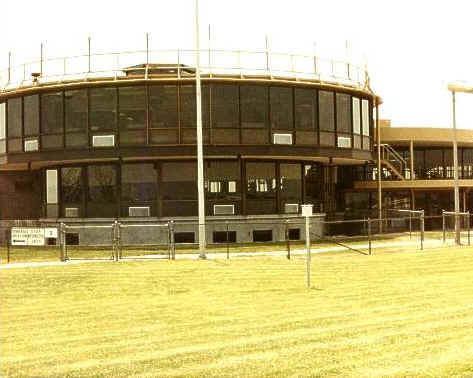
Quincy FSS (UIN), Illinois. August 1984

Quincy FSS (UIN), Illinois. August 1984
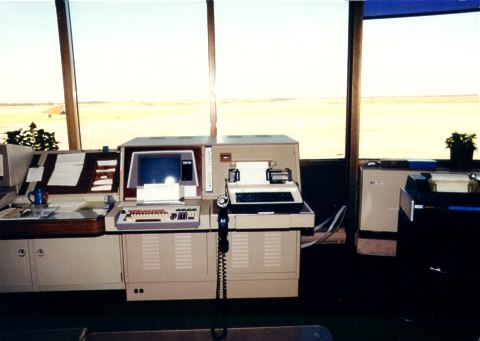
Quincy FSS (UIN), Illinois, 1986
Leased Service-B equipement
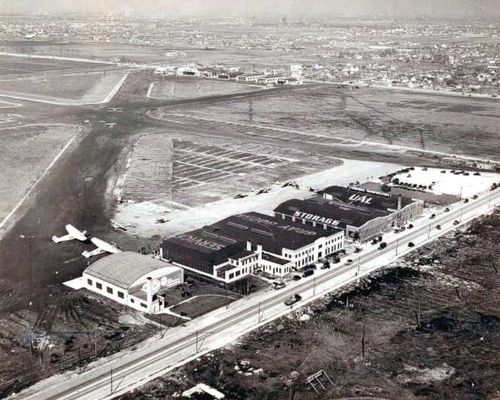
Chicago-Midway, Airport, 1929
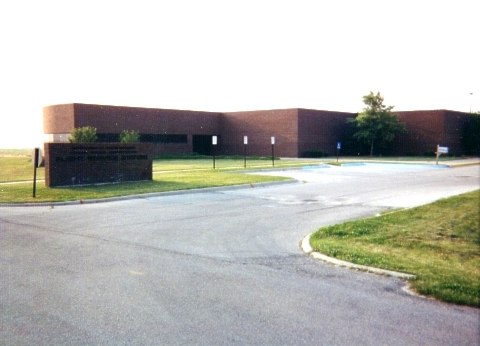
Kankakee AFSS (IKK), Illinois, about 2005
Effective October, 4, 2005, a private company, Lockheed Martin (renamed Leidos), assumes responsibility for all flight service functions. Below is a list of those dedicated FAA employees who were employed at Kankakee AFSS on the last day of their FAA career, October 3, 2005.
Kim Abbey
David Almaguer
Charles Anesi
Cynthia C. Cole (ATM)
Benny Coppage
Carolyn Crawford
Jeremy DeHaven
Gary Dehmer
Leslie Etienne (Secretary)
Robert Foley
Robert Franklin
Sharon Franklin
James Green
John Gronski
James Harter
Michael Henry
Roderick Jefferson
Lon Kunz
Theodore Lederer
Anna Lissak
William Madden
Lawrence Martyn
Steven Mayhood
Linda McClearn
Rodney McClearn
William Mercker
Stephen Mitchell
Isiah Richardson
Bonnie Ross (AO)
Frank Sorich
Stephen Sosnowski
Alain Sterk
John Stokes
Theodore Tragesser
Leo Tyda
Paul Wilfinger
Raymond Wilson
Darryl Winter (OM)
Chicago FSS (CHI), Illinois, February 1, 1980
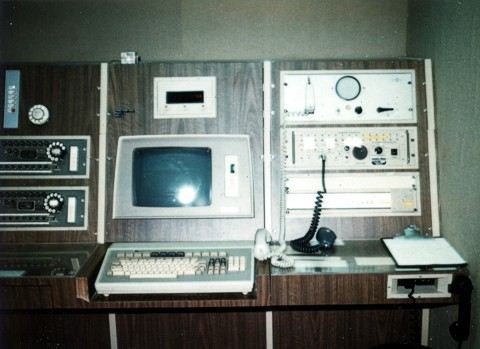
TWEB and PATWAS monitoring position
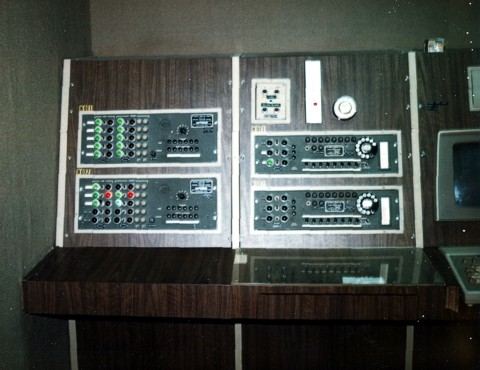
TWEB and PATWAS monitoring position
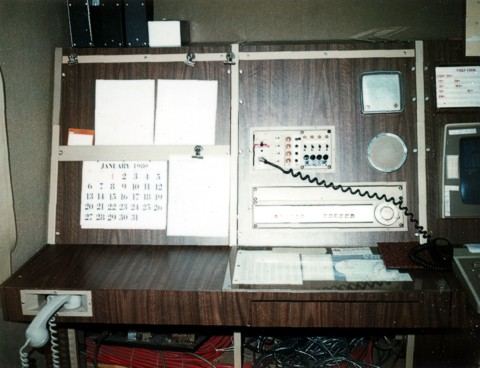
Flight watch position (EFAS)
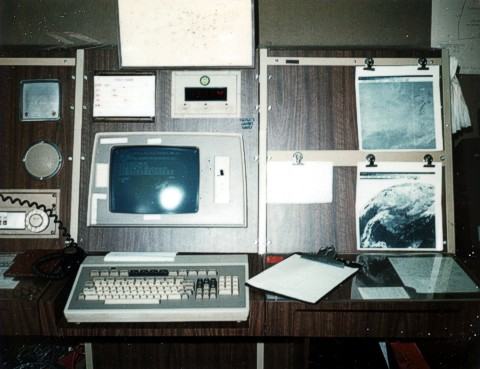
Flight watch position (EFAS)

Inflight position
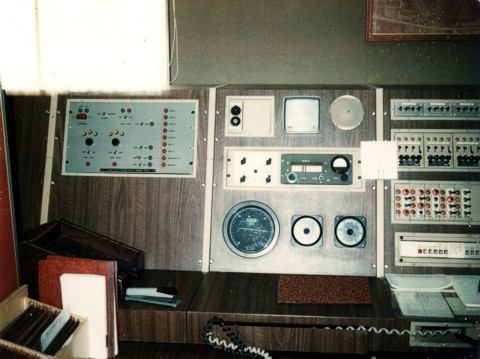
Inflight position
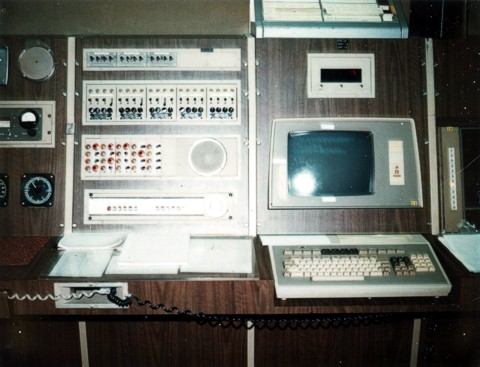
Inflight position
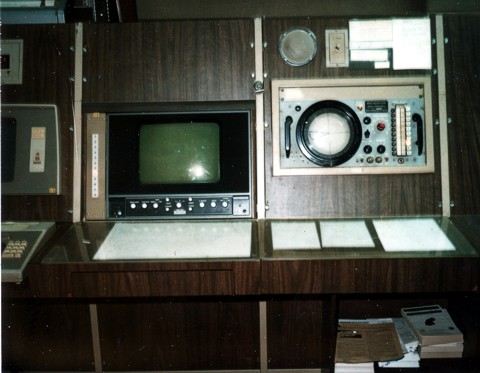
Inflight position. The Directional Finder (DF) on the right was used to located lost aircraft
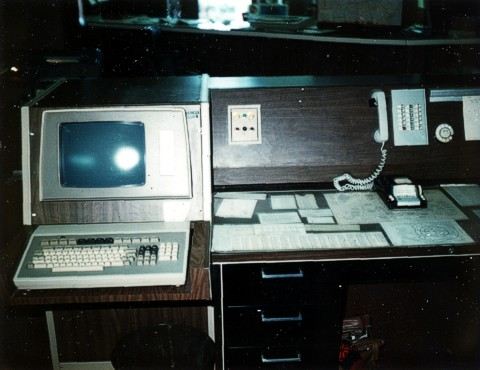
Team supervisors position
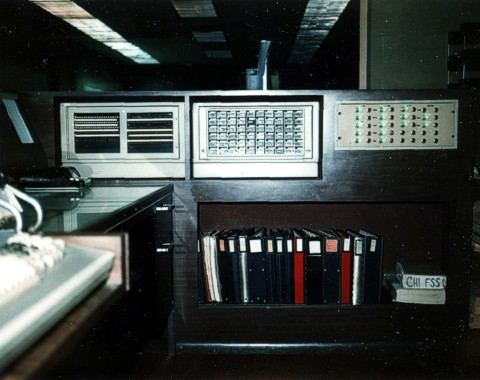
Team supervisors position
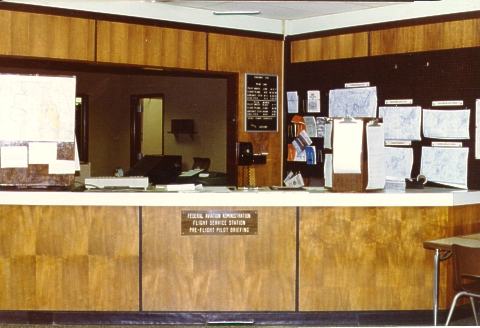
Pilot Weather Briefing Counter
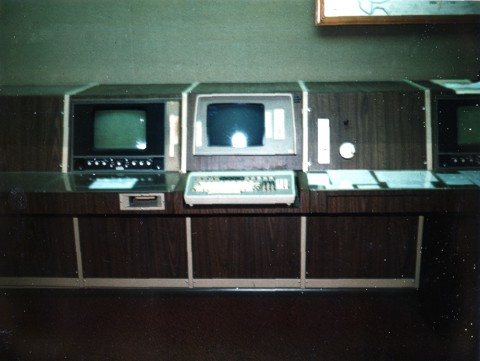
Preflight briefing position
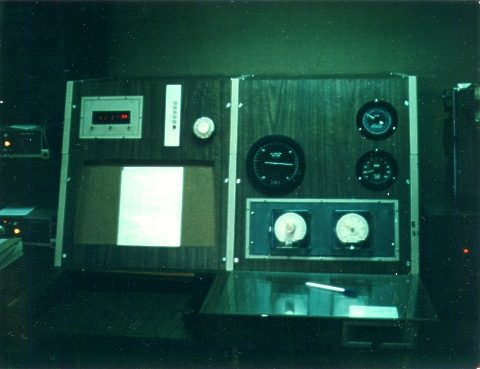
Weather observation position
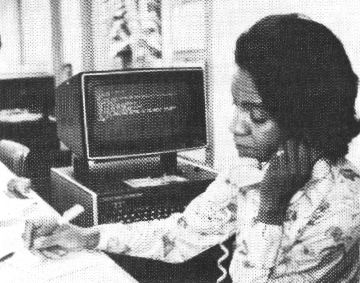
Chicago FSS (CHI), Illinois, date unknown
One of the newer electronic aids is the computer-driven, cathode ray tube (CRT) display providing current weather from a variety of sources like this one in use at the Chicago Flight
Service Station
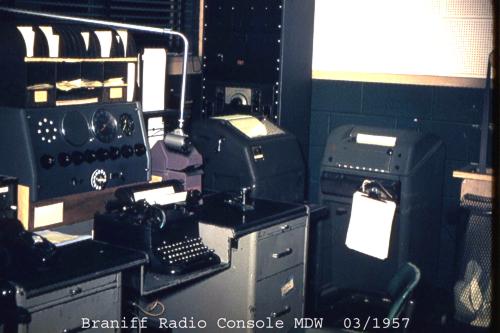
Historical data and photo submitted by Robert Roll, former Braniff Airline Midway employee
Midway Airport (MDW), Illinois, March 1957
Braniff Airlines Air/ground Company communications at Midway Airport. They had three High Frequency (HF) radio frequencies and one VHF frequency. The tele-autograph supplied current weather information from the NWS to keep approaching flights informed. There was also a weather teletype machine to receive hourly weather and winds. The station included a 19ASR machine with tape punch to send position reports and other information to the company. During those days they communicated with the Air route Traffic Control Center and relayed clearances to Braniff flights until they got to the Approach Control Zone.
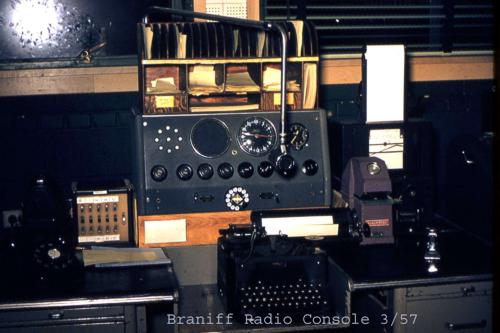
Chicago FSS (CHI), Illinois, May 1979
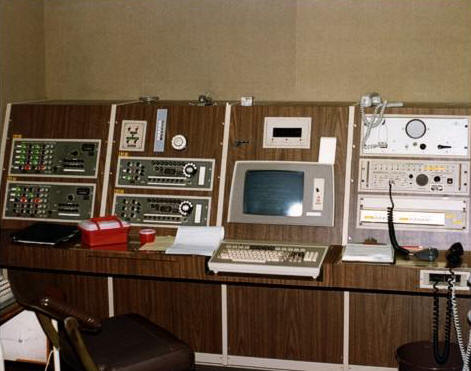
TWEB and PATWAS monitoring position
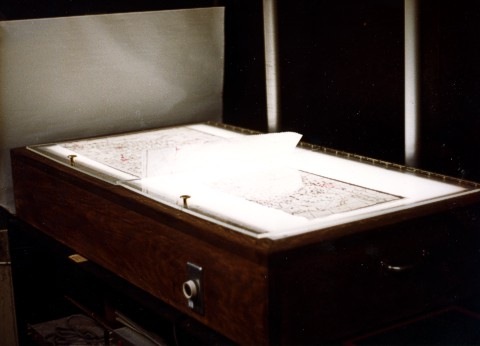
Lighted weather map table
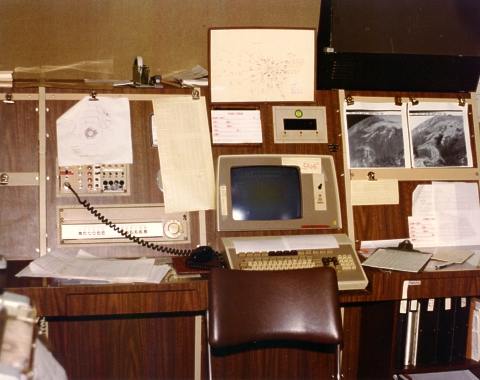
Chicago FSS Flight Watch position (EFAS)
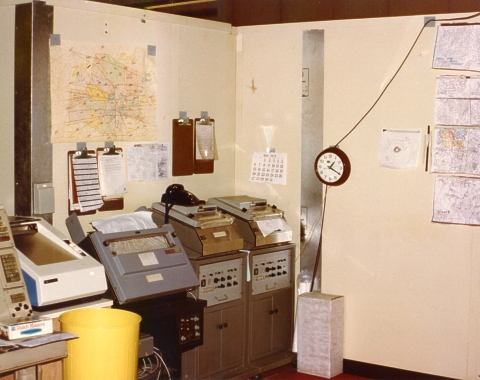
Charts and facsimile display area
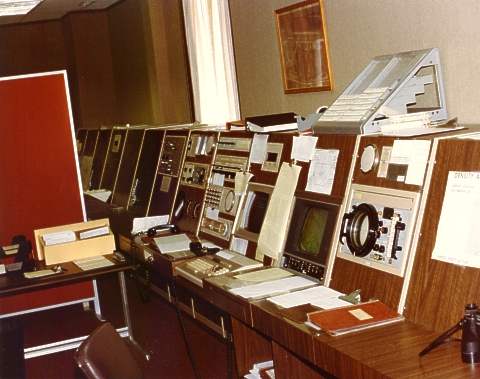
Inflight position
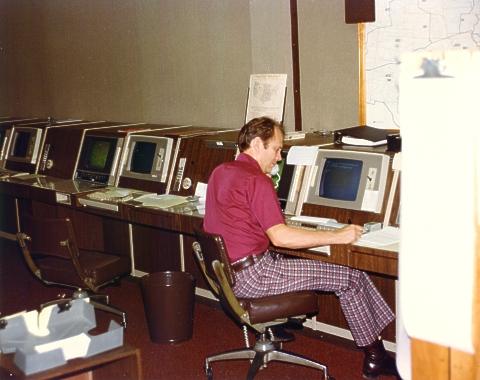
Preflight positions. Employee name unknown
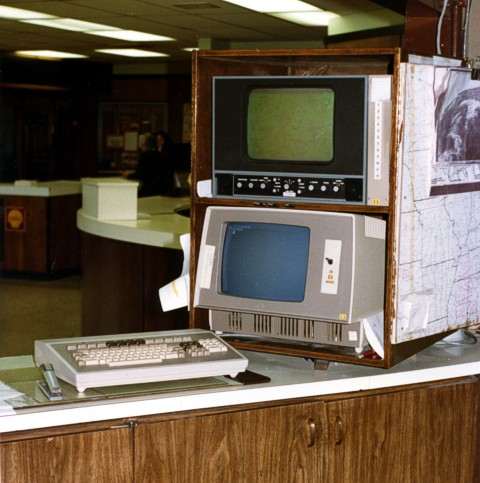
Pilot weather briefing counter
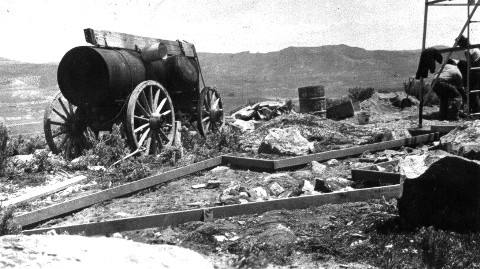
Submitted by Joe Jennings
Light Line Construction, Woodruff, Idaho, June 1930
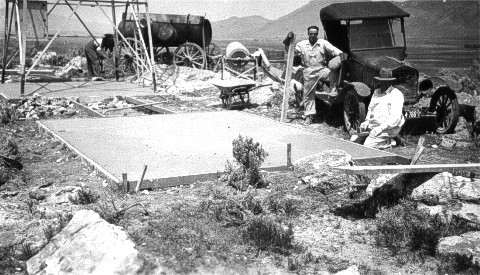 Submitted by Joe Jennings
Submitted by Joe Jennings
Light Line #9 Construction, Woodruff, Idaho, June 1930
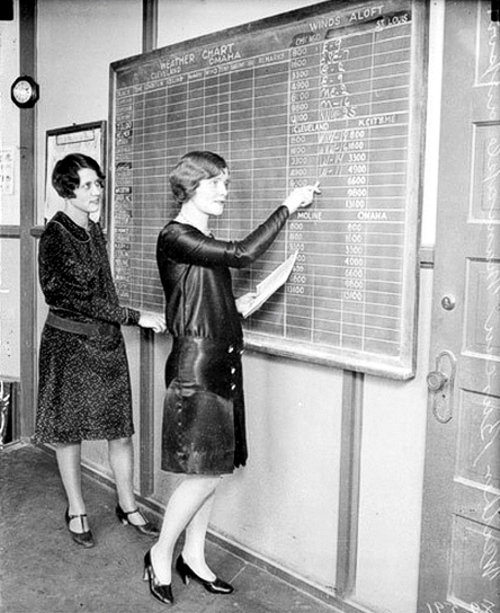
Chicago-Midway Weather Bureau, 1929
Current weather reports are collected and posted on this weather chart. Identifiable city names on this board, left side, under Weather Chart are Cleveland and Omaha. Right side under Winds aloft are Chicago, St. Louis, Cleveland, possibly Kansas City, unknown, and Omaha. Writing on the backside says “Weather Bureau Municipal Airport”.
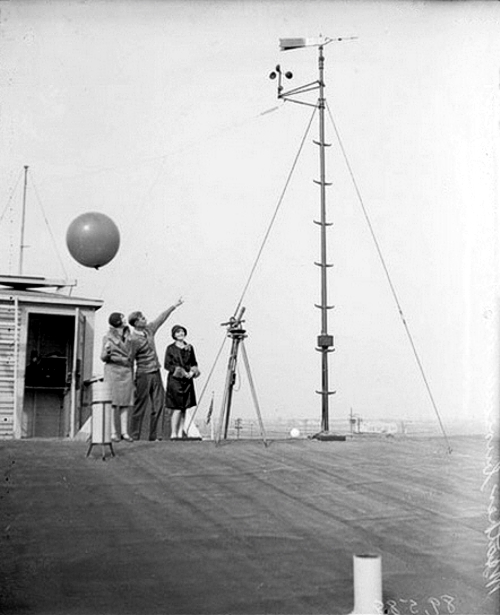
Rooftop weather recording instruments. The Weather Bureau employee is pointing at the wind speed and wind direction Instruments.
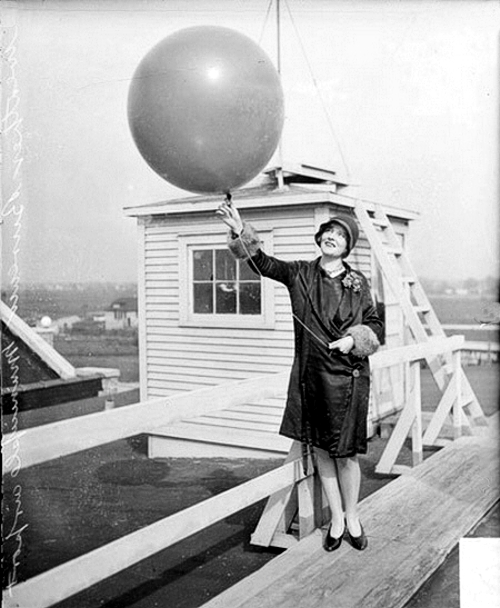
Releasing a helium filled ceiling balloon. Upon release of the balloon the weather observer, using a stop-watch, times its accent until it fades into the clouds overhead. The observer then refers to a chart to determine cloud height above the ground based on the balloons accent time. This method provides a reasonable measurement of the base of a broken or overcast layer of clouds below about 3,000 feet.
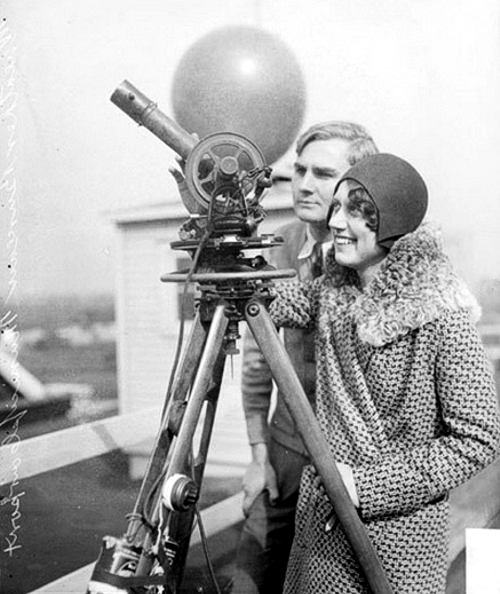
Weather Bureau employees taking some type of unknown measurement, possibly a ceilometer to measure cloud height above ground.
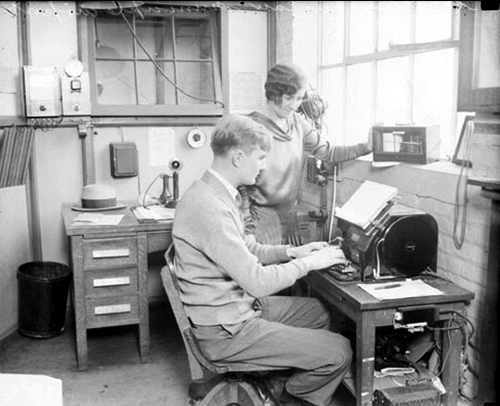
Weather Bureau employees preparing to transmit a weather observation